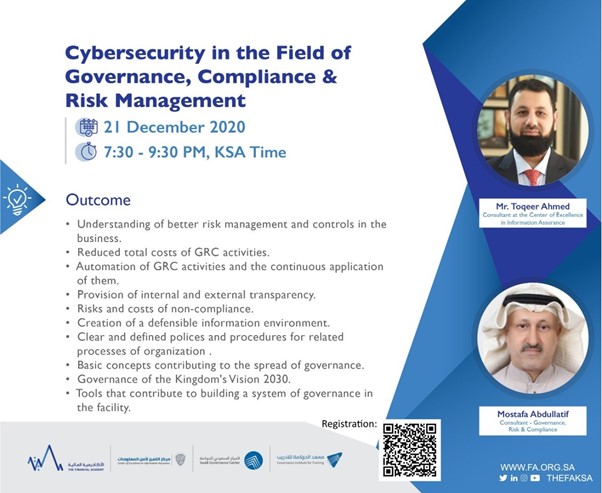GRC Frameworks Implementations & Audits
GRC Frameworks Implementations & Audits GRC Stands for Governance, Risk Management & Compliance and this is a system used by many organizations to meet their statutory, regulatory & organizational requirements . This Keynote will be focusing about the complete life-cycle of GRC , enabling participants to learn that it is indispensable for organization to perform steadily and serve smoothly through implementation of standards/ frameworks by managing all associated risk amicably as per level of risk associated with each of the asset. Furthermore, this session shall cover the following topics as well. • Understanding of better Risk Management & Controls implementation • Automation of GRC activities and its benefits • Provision of internal and external transparency • Clear and defined policies and procedures for related processes of organizations • Reduction in risk across the whole organization including cybersecurity risks, operational risks and business risk





